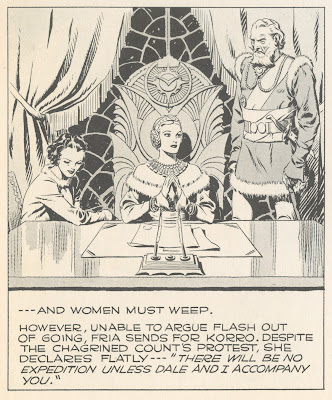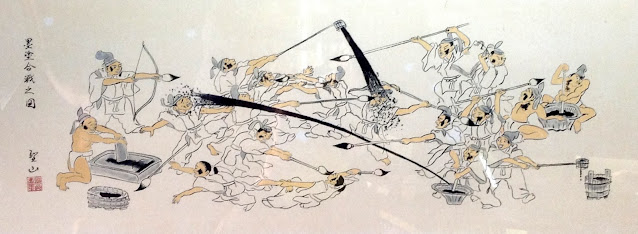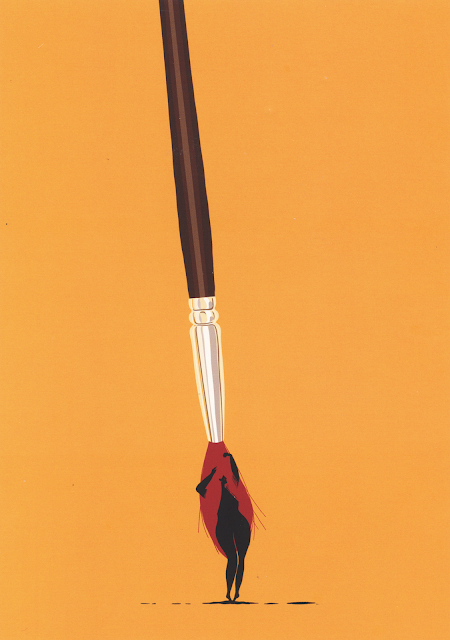This drawing by James Montgomery Flagg is as confident and brash as Flagg himself.
The drawing is large-- nearly 30 inches (76 cm) and appears to have been drawn mostly from the elbow.
This drawing by James Montgomery Flagg is as confident and brash as Flagg himself.
The drawing is large-- nearly 30 inches (76 cm) and appears to have been drawn mostly from the elbow.
Franklin Booth (1874-1948) learned to draw by studying wood engravings in magazines while he was growing up on a farm in Indiana. He mistakenly thought the engravings had been created with pen and ink, and so developed his highly unusual drawing style simulating engraving lines.
I usually prefer drawings with a more direct and expressive line, as opposed to clusters of lines used to create values. There always seems to be more painstaking effort than necessary in Booth's drawings. Still, when you look at extreme closeups of what Booth accomplished, you have to respect his consummate craft.
 |
| John Buscema, inks by Alfredo Alcala |
 |
| Reed Crandall |
The stories in comics, pulp magazines, science fiction and fantasy were never subtle about the proper roles for men and women. Here is Flash Gordon by the great Alex Raymond:
 |
 |
 |
| Prince Valiant by Hal Foster |
"Albert, your drawing is swell but we are afraid our readers will not like it. The violent fiery red is a bit frightening, the interpretation too literal. We have found from our readership polls, etc. etc. Would you mind doing it over?"Dorne was irritated. He recalled, "The audience in mind being primarily women, I knew I couldn't actually show fire, so I... created the illusion of fire by lighting the picture with a deep fiery glow from off stage." But that wasn't sufficient. The picture's strong, high contrast treatment, with pointed fingers, sharp angles, extreme positions and facial expressions was still viewed as too yang for a female audience.
Cosmopolitan presented Dorne with "a layout designed in a much lighter vein and quite gay in its concept." The art director explained, "This is the sort of thing our readers like."
Dorne (a powerful, cigar smoking man and former prizefighter) bitterly started over and this time turned in a much softer, pinker, friendlier picture:
 |
| (Toshikage, 7 Gods Fighting with Ink, 1888) |
 |
| (The Ink War) |
 |
| (Ralph Steadman, the Malevolence of War) |
 |
| Alice Mollon's illustration of ink slipping nude into the world |
"To live is to war with trolls." -- Ibsen
Anthropologists tell us that primitive cultures believed art had supernatural properties. Prehistoric tribes thought that striking a drawing of an animal on a cave wall would give them luck in the hunt.
 |
| Diorama from the Field Museum in Chicago |
Apotropaic images were believed to contain protective magic. Ancient Egyptians believed that images had the power to connect them with the gods, and that carvings in tombs would come alive in the afterlife.
They also believed that a person would be destroyed if his cartouche was obliterated.
It's a measure of the lasting power and mystery of art that even in modern times, superstitious and ignorant people continue to believe that destroying an image will obliterate their enemies.
 |
| illustration of "Impotence" by Push Pin's Seymour Chwast |